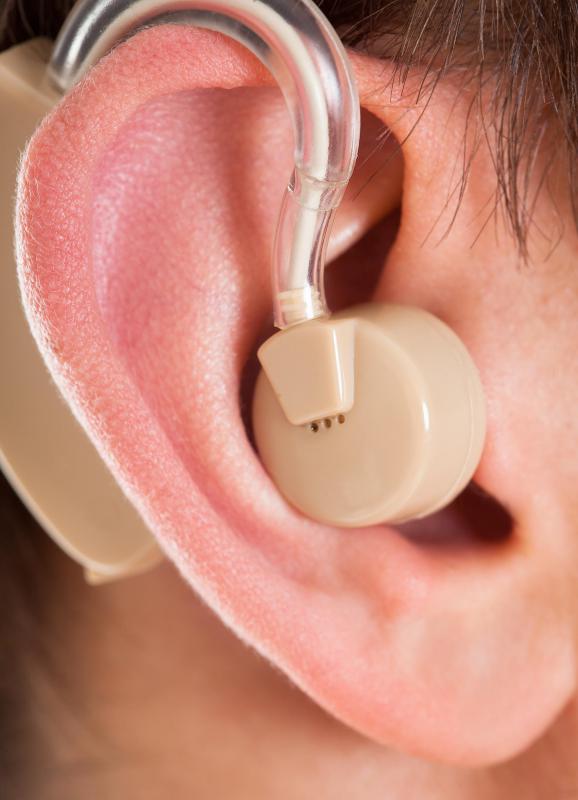At WiseGEEK, we're committed to delivering accurate, trustworthy information. Our expert-authored content is rigorously fact-checked and sourced from credible authorities. Discover how we uphold the highest standards in providing you with reliable knowledge.
What is a BTE Hearing Aid?
A behind the ear (BTE) hearing aid is an auditory amplification device that fits behind the ear. The device's three parts include an earmold, case and tube. The earmold is typically sculpted to fit the wearer’s ear or made of highly-flexible material that can be easily manipulated into a comfortable shape for any size or shape of ear. The amplifier for the device is inside the case, and the tube connects the amplifier to the earmold. This type of hearing aid is normally recommended to people with hearing losses ranging from mild to extreme.
Depending on the style of the BTE hearing aid, the sound may be transmitted either acoustically or electronically. Options for the colored parts of the hearing aid vary. Some brands offer several skin tones designed to be discreet and barely noticeable, while others provide customers choices of brilliantly-colored devices and an array of creative adornments.

Some hearing aid wearers prefer more recent styles that are less visible. These include in-the-canal (ITC), completely-in-the-canal (CIC) and in-the-ear models. Instead of resting behind the ear, all these devices are internally placed in the ear and are nearly invisible.
While BTE hearing aids are the largest physical models on the market, they are generally considered to have a myriad of advantages over less bulky styles. They are commonly known to be highly reliable and generally more powerful than other models. Since all the components of the device are located externally, the chance for moisture or earwax interfering with the electronic transmission is virtually eliminated. For physically active wearers as well as children, a BTE hearing aid is often seen as the most durable option.

Other frequently cited advantages include the fact that the BTE hearing aid can easily be connected to assisted listening devices. This feature is especially attractive to children who may be able to connect with FM systems frequently used in classrooms. Telephone, televisions, radios and stereo systems also commonly have BTE hearing aid compatibility.

In recent years BTE hearing aid manufacturers introduced a miniature version of the device that fits inside the ear and is often less visible than BTE models. These types have tiny tubes resembling hair that transmit sound. They also have a larger opening into the ear canal. This reduces or eliminates the need for electronic amplification. Usually only persons with mild to moderate high frequency hearing loss or with lower frequency hearing loss find these models adequate for their needs.
AS FEATURED ON:
AS FEATURED ON:













Discuss this Article
Post your comments